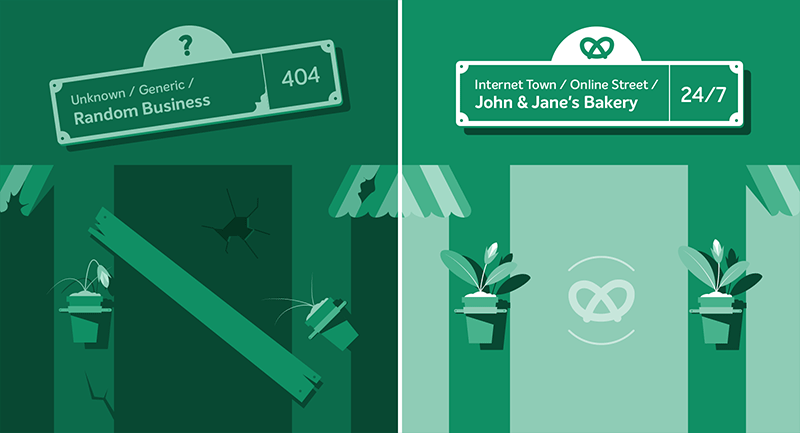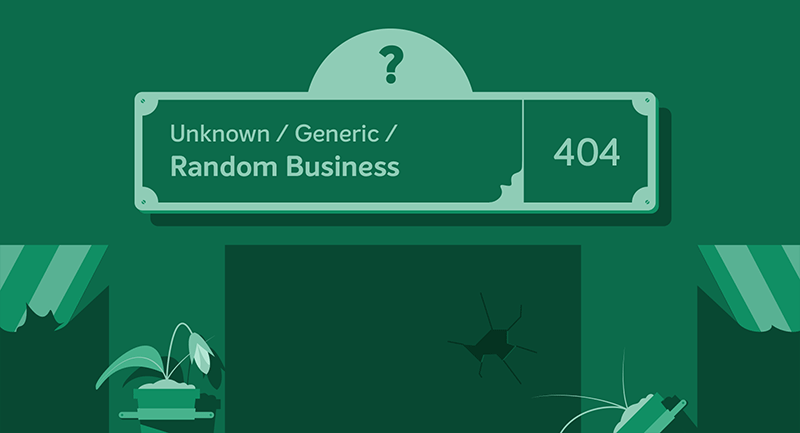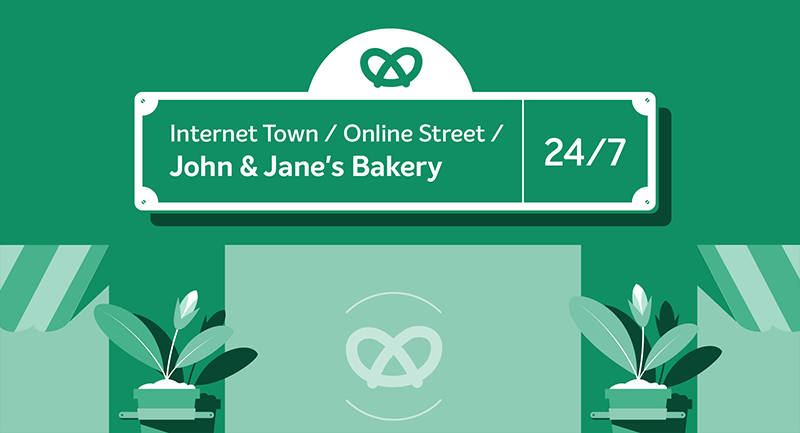Choosing your WordPress permalink structure


When you set up a new blog or website using WordPress you are faced with a decision that will impact the future of your content’s success for years to come – while reversing it is hard and risky down the road: choosing the right permalink” structure.
This can be daunting for beginners. So let’s explore all the things you need to consider.
Whether you’re planning a blog or website, WordPress is the right choice for both. Be it…
- a tiny “business card” type of site
- a daily or weekly diary or news blog
- a blog/website with few timeless evergreen posts
- a legacy blog or large site with lots of articles
- just a solid site with 12 pages + a blog
First, you have to decide which WordPress “permalink” structure you want to choose for the foreseeable future.
What is a “permalink” or, broadly speaking a URL (unified resource locator)? It’s basically the address you will publish your articles at. Just like a building or house needs an address, every page on your site or post on your blog needs one too.
The most important difference between real life and Web addresses is that online you can choose yours and make it much more specific. That’s excellent news! This way you will become and stay findable for all kinds of people.
There are a few good tutorials on how to actually change your permalinks. WPBeginner has one or two we’d recommend. There are other good ones on Theme Isle and Elegant Themes as well. Yet we don’t want to repeat the basics. We want to enable you to choose the right structure for you and your specific site or blog.
Consistency is key with your permalink structure

Before we start please remember one thing: do not ever change an address online unless you really have to. That’s why these links are called permalinks! They are meant to stay permanent.
When you do move or change permalinks make sure to add a “moved” sign to every address of a page or post.
The decision you make today can impact your content’s success for years to come, so take some time to make sure it’s the right one.
Unlike in real life, you are not stuck with your boring or random city and street name. You can decide on almost every single part of your online address. Once you’re done, your decision should be final though. You can decide again – to some extent – for the next page or post. The overall structure should stay the same.
You are not a fugitive trying to cover your tracks. Your address should be as stable as possible or not change at all. Otherwise, you will lose some visitors, customers or may even get deindexed by Google. That would be like losing your Yellow Pages entry back in the day. Some people won’t find you.
How WordPress rewrites addresses to make them pretty
Here’s a challenge: can you read your website address aloud without stuttering or sounding like a robot? When WordPress was still new it was similar to other website software back then. The addresses were often numeric, cryptic and not really human-readable.
One thing was different though with WordPress post addresses: they made them short and clean. Instead of long and unfathomable gibberish WordPress introduced short post addresses like
example.com/?p=101
For many people that was still not enough though. There was no incentive to click such a seemingly random number. Sure, it was short and easy to share in a mail or chat message but why click it at all and not p=100 or p=102 instead? Want a real reason to click? Here are some:
example.com/angelina-jolie-naked example.com/brad-pitt-naked
The next-level website address was not only clean but also human readable – that is it made sense and was also memorable in the best case. They also simply looked good! Initially, it was difficult to get such pretty URLs. You had to enable a so called mod_rewrite module on your server – as long as your server supported it. Market-leading Apache did but many others didn’t yet.
This “hack” or workaround was so popular that WordPress included it in the software itself. Ever since you can choose whether you want to have a short and clean number or a really neat address people can actually,
- read
- understand
- memorize
in the best case. Most website owners and bloggers by now choose the readable ones and it’s also the option WordPress has enabled out of the box.
While clean and pretty permalinks are a feature now, they are still numbers that get rewritten. Each time someone clicks a link to your site like example.com/pretty-post-address the WordPress engine sends a request to the database to look up the matching post number.
In geek speak this number is “mapped” to the pretty address. This database lookup is almost instant and no problem unless you have thousands of them at once. Then it causes additional load and may slow down your site.
To get the best of both worlds you can add both the internal post number and the readable address to the permalink. Something like
example.com/101/pretty-post-address
works fine.
How to make permalinks really useful
Now that we know why pretty addresses matter – not just because of the looks – we can think about how to really make them
- useful
- findable
- memorable
To make them useful they need to mean something and provide some context. Some news organizations get lazy here and do something like this:
example.com/news/technology/google-1 example.com/news/technology/google-2 example.com/news/technology/google-3
to cover the news on Google. This way you never know which address refers to which news item. Consider these examples instead:
example.com/news/technology/google-aquires-microsoft example.com/news/technology/google-breakup-ftc example.com/news/technology/google-bankrupt
Just one or two words added can make these news really exciting, intriguing and a must read.
They are also findable both on the site itself and outside of it. Readers who just have heard some rumors and wonder what happened would probably search Google or using the WordPress search feature by typing something like [google bankrupt] or [google bankruptcy].
Even when mobile users ask verbally a question like [is google bankrupt?] or [when did google go bankrupt] the search engines will match the keyword and often simply ignore the other words (also called “stop words” because Google stops searching for those and just moves on to the next actual keyword).
As a side note: always use dashes (not underscores etc.) when connecting words in Web addresses. Why? For Google a dash means you have two words but an underscore equals one word. Most people will search for [google bankrupt] as in google-bankrupt not [googlebankrupt] as in google_bankrupt
WordPress uses dashes automatically but you may be tempted to change that. Please do not!
Now, what happens when someone wants to share the breaking news or timeless tutorial with their friends and hasn’t bookmarked the link? Ideally, they can just type it out of memory. Here again, large news organizations have a problem. With a complex structure like:
example.com/news/technology/google-bankrupt
it’s hard to remember or type the whole address. It would be easier just to remember when the address is just
example.com/google-bankrupt
To make addresses memorable they need to provide context and be intriguing enough but also as short as possible without losing one of the two. The lesson is: add context, make it intriguing and stay as simple as possible.
Typical WordPress sites and their ideal permalinks

#1 A Tiny “Business Card” Type of Site
You don’t need a business card these days! Just like the Yellow Pages, it’s a nice to have. It feels good to have one and sometimes it’s the fastest way to share your contact details in real life but most people will find you and check you out online – ideally on your own address.
Without a site, people may find your deserted social networking pages or even your hip but not ripe for prime time personal social media accounts when looking for you.
These social media sites are fine to get some people to visit your site but can’t replace your own place on the Web. Also, you have to watch them very closely to ensure that really relevant information is on top, and not just the latest cute pet video.
Many people and businesses do not need a large content-rich site from day one. Your online presence can start with just a homepage or only a few pages like:
- about page
- services page
- contact page.
You can keep things as simple as possible but don’t simply use:
example.com/about/ example.com/services/ example.com/contact/
It’s a great start but lacks context completely. There are no clues for search engines either. Also this way you will end up having almost the same address as everybody else. You can add some context with a mere word or two:
jjsbakery.com/about-john-and-jane jjsbakery.com/baking-services jjsbakery.com/contact-bakery-south-manhattan
In case you want to grow in the future you can create categories instead and add them to the permalink structure. Then you’ll have both context and future-proof growth-ready permalink structure:
jjsbakery.com/about/john-and-jane jjsbakery.com/about/bakery-lower-manhattan jjsbakery.com/about/bakery-brooklyn jjsbakery.com/about/bakery-staten-island
#2 A Daily or Weekly Diary or News Blog
In 2003 WordPress started out as a blogging tool. For a few years, it remained the first and foremost use case for the software. To this day most bloggers prefer WordPress. While the content management system is used for all kinds of website snow it can still work very well for a conventional blog.
What is a blog? In its simplest terms, a blog or initially weblogs is a website that publishes regular content with the newest updates on top while the older ones get archived by date. A blog originally also was about encouraging comments. These days many blogs disallow commenting though or use third-party services like Disqus to host and manage comments.
When you want to publish daily, a few times a week or at least weekly a blog is a way of publishing to consider.
Do you have a lot of news to report? A blog is a good choice. Even when you want to share your latest thoughts in a diary-like publication a WordPress blog is the best option for you. Otherwise, your content may get lost on your ever growing site. When you only publish occasionally or want to keep your site small, consisting of the same few pages or business card website is better for you.
Let’s consider a blog that updates daily or a few times a week. believe it or not, the original blogging wave consisted of many such blogs. Back then, blogging meant publishing short Facebook or Twitter-like updates though. You can’t publish large tutorials, essays or guides every day unless you have a team of several writers and editors – and even then it’s hard.
Assuming that your blog posts often reflect your current mood (in a diary) or the latest news the date is an important aspect of each post. This also applies to anything time-bound – think sports scores of your local team for example.
example.com/2019/04/01/april-fools-is-annoying
This is an example of a very timely diary-like blog post that is only relevant on a given day.
It could go even further. When you publish an actual prank the date can help to provide context:
example.com/2019/04/01/this-blog-closes
When creating a blog that will publish weekly posts or more like a magazine with monthly issues you can always drop part of the date:
example.com/2019/04/weekly-links-15
or
example.com/2019/april-issue
may suffice then! Of course, you better add some context to those permalinks!
example.com/2019/april-issue-spring-break
#3 A Blog/Website with Few Timeless Evergreen Posts
The blogging hype has subsided over the years and personal bloggers were overshadowed by large teams from corporations with serious budgets. The blogging space is pretty crowded by now and you have to know upfront what you want to write about in the future.
Why choose a niche that suits early on? Otherwise, you may end up being one of dozens of similar blogs and unable to compete for attention without a whole team of writers and editors.
Even then your chances of success or much lower without a proper content strategy. “Just create great content and they will come” does not work anymore if it ever did.
Oh no! What can you do as a single blogger or small business owner? You can’t just compete with dozens of others who have been around for many years. How do you get even noticed?
One way to rise above noise level and get some attention despite the myriads of blog posts that get published each day is to create timeless content that will remain valuable for years to come. While everybody else is already covering the latest news and trends you can stand out by providing:
- evergreen tutorials
- comprehensive guides
- in-depth essays.
Brian Dean of Backlinko is the master of this retro-futurist type of blogging. He will spend 100h on a single post and only publish a few of those per year but they excel other content by a large margin! He dominates the very noisy search engine optimization niche!
Websites have stayed the same over the years. Usually a piece of content is written once and then either left alone, updated irregularly or deleted altogether down the road. Ideally, website content stays always relevant and is not just a timely news item.
Most websites do not even include a publish date on their articles or pages because it’s not meant just be read at a particular point in time. When content gets updated it often gets a “last updated” notice to show visitors that it has been reviewed more recently.
Timeless websites or evergreen blogs can use the most simple permalink structure there is from a visitor standpoint:
example.com/evergreen-content
In reality, most headlines are much longer though. You will rather end up with something like:
example.com/how-to-write-evergreen-content-that-is-both-timeless-and-valuable
This is still useful and findable but obviously not really memorable. Luckily you can always edit the post link when working on that post in WordPress! In the best case, you make it as simple as possible but not simpler again. Try to keep some context and ideally match a keyword people would be likely to search for.
example.com/write-evergreen-content
The above example provides both keywords and context. In case you don’t care about your post links being memorable consider that sharing such long and cumbersome links is often risky and sometimes even fails for technical reasons.
When adding a link to a mail or instant message your link may get cut off! You may end up with something like:
example.com/how-to-write- evergreen-content-that-is- both-timeless-and-valuable
in the worst case where only the first line is linked! When you have more than one article starting with “how-to-write” like in:
example.com/how-to-write-spicy-content-your-friends-will-share example.com/how-to-write-web-development-tutorials-for-the-web example.com/how-to-write-evergreen-content-that-is-both-timeless-and-valuable
What happens then is that WordPress won’t know which how-to-write article you actually wanted to link to. And will and choose a more or less random one. You may end up linking to one of the others instead. In the worst case WordPress might not find any article at all and show an error message!
Again you can add the legacy “ugly” post numbers to your permalink structure to prevent that from happening! When you a post number like 101 at the start of the link like
example.com/101/how-to-write-evergreen-content-that-is-both-timeless-and-valuable
cutting off parts or all of the readable part of the link won’t affect your link negatively. With a number up front, your WordPress will always find the correct post matching the link!
example.com/101/how-to-write- example.com/101/how-to example.com/101
will all lead to the same post as intended! WordPress suggest adding the numbers at the end of the permalink like in:
example.com/how-to-write-evergreen-content-that-is-both-timeless-and-valuable/101
but that way accidentally truncating the link will lead to the same problem as explained above:
example.com/how-to-write-
#4 A Legacy Blog or Large Site with Lots of Articles
Let’s say you already have a blog or website, and you have created and published articles for years! Maybe it’s not just you but the whole team. You may have hundreds or even thousands of posts already. Just hiding them in a date-based archive does not make much sense as nobody really peruses those until they have a very compelling reason.
It’s also hard for Google to spider all legacy articles from years back when they aren’t linked from the homepage or recent content.
Even in case you don’t have as much existing content but plan to deliver a few posts per week for years to come you better decide how to structure the sheer number of articles in the future so that they don’t vanish after a few days or weeks.
Ideally, you start categorizing your articles from the start. Coming up with meaningful categories is not self-explanatory as you would think. That’s a ‘how to’ article by itself. Stay tuned. We will elaborate on this as well! Assuming you know which kinds of topics you will cover or already have assigned topics to your existing content in the past we can start thinking about the actual permalinks.
Let’s assume we are building a WordPress website about pets. We have currently five main categories:
- cats
- dogs
- turtles
- birds
- fish.
Five is a good number. 3 to 6 are best for a quick overview. More than ten are already very hard on the visitors and require a lot of cognitive effort to overlook and to locate what you want. Ideally, you have around 6 of the main categories. Many WordPress themes simply break or look ridiculous once you have 12 or more topics you cover and each is reflected in its own category:
example.com/cats/ example.com/dogs/ example.com/turtles/ example.com/birds/ example.com/fish/
Oh, wait! There is already a potential issue in that structure! What about when you have articles about other reptiles in the future, not just turtles?
It’s better to plan for the future and create a reptile category up front instead of having to change the address later on.
Why not start with:
example.com/reptiles/turtles/
Then once you have the categories taken care of you can just think about proper post links for each article. Again you want to keep them useful, findable and memorable.
example.com/cats/why-do-cats-roam-free-on-their-own
Here you could shorten the permalink to:
example.com/cats/why-do-cats-roam-free
without losing context or keywords.
#5 Just a Solid Site With 12 Pages + a Blog
Another common type of website or blog is the combination of both. Many sites either start right away with a blog or add one sooner or later. This also often applies to small businesses, non-profits, religious sites, sports teams and other organizations.
They have both a significant but not huge amount of “static” pages – think a dozen or two or even a few dozens – it’s somewhere in between a business card site and a large site.
Like in the business card website example you probably already have a structure akin to:
example.com/services/wedding-cakes
To that you can add no-name blog
example.com/blog/
Take note though that many people still don’t know what a blog is. Some will call you for example and ask how much an item costs and when you can deliver it when you cover a third-party product – that you do not even sell. Thus you may consider calling it something more self-explanatory like
- news
- journal
- magazine
example.com/magazine
It’s still a bit bland and lacks context though. This way it’s not memorable. It’s better to add something unique like a name or descriptive words to your link:
example.com/bake-and-cake-magazine example.com/your-daily-bread example.com/gluten-tolerant
Something unique is always more findable and easier to remember. By providing keywords and context it’s also more useful. Pun only names are sometimes better. When there are lots of already similar sounding blogs out there for example or your favorite audience are big city hipsters looking for something cool.
Returning to our example from jjsbakery.com we’d have already some context from the domain name. Then using a pun-only name would be less of an issue:
jjsbakery.com/gluten-tolerant/
A post link would look like this then:
jjsbakery.com/gluten-tolerant/how-to-bake-bread-like-your-grandparents-did
In case you plan to have hundreds of posts down the road rather use categories like:
jjsbakery.com/gluten-tolerant/tutorials/how-to-bake-bread-like-your-grandparents-did
or even better something more useful, findable and memorable with more context but a short address:
jjsbakery.com/gluten-tolerant/bread/bake-grandparents-way
